19.02 - 22.05.2016
The internationally renowned French artist is known for his in situ works, characterised by the
presence of a recurring motif made up of alternating white and coloured stripes. The specific character
and often short-lived nature of Daniel Buren’s works (80% of his works no long exist!) mean a classic
retrospective of his work would have been impossible.
Daniel Buren, Sha-Kkei ou Emprunter le paysage, travail in situ,
Ushimado (Japon), novembre 1985. Détail. © DB-ADAGP Paris
With this exhibition entitled “A Fresco”, Daniel Buren offers an original solution to this dilemma. Theexhibition has been conceived as a visual and temporal crossing in the course of which Daniel
Buren establishes a dialogue between his work and selected works by more than 70 artists from
the 20th and 21st century. These artists who had a major influence on his own artistic career, from
Paul Cézanne, Fernand Léger to Pablo Picasso, by way of Jackson Pollock and Sol LeWitt to
Pierre Huyghe and plenty more besides.
A specific work, in the form of a film directed by the artist, will provide a major overview of his works from the 1960s until the present day, and more particularly of his ephemeral creations. This multiscreen fresco will made up of be a combination of archive images, film extracts, commentaries and interviews. Daniel Buren will create a work in the Horta Hall, on the fringes of the exhibition circuit. This work will be in relation to the architecture of the Centre for Fine Arts.
A Fresco will be entirely conceived and carried out by Daniel Buren in collaboration with the curator
Joël Benzakin. It is being specifically created for the spaces in the Centre for Fine Arts. This
exhibition promises to be an unmissable milestone in Buren’s work.
Daniel Buren, Les Deux Plateaux, © DB-ADAGP Paris
sculpture permanente in situ, cour d'honneur du Palais-Royal, Paris, 1985-1986. Détail.
Daniel Buren (1938, Boulogne-Billancourt) is one of the best known and most influential contemporary artists of his generation. Since the end of the 1960s, he has enjoyed international renown thanks to the in situ works he has created all over the world. His interventions are always linked to a specific place or situation, be it artistic institutions, private places or the public space. The majority of his creations are ephemeral but Daniel Buren also has some permanent works to his name which are part of the most prestigious public and private collections. One of the most famous is Les Deux Plateaux (1986), a gigantic 3000 m² installation in the main courtyard of the Palais-Royal in Paris. He has also taken over, amongst others, the Guggenheim in New York in 2005, the Georges Pompidou Centre, and, more recently, the nave of the Grand Palais for the 2012 edition of Monumenta. There have been more than 2600 Daniel Buren exhibitions throughout the world. He has participated in the Kassel Documenta and the Venice Biennale (where he won the Golden Lion in 1986) on several occasions. In 2007, he was awarded the Praemium Imperiale, by the Emperor of Japan. This award is widely considered to be the equivalent of the Nobel Prize for visual arts. Since 1967, Daniel Buren has been using a recurrent motif inspired by the awnings of Parisian shops and bistros: alternating vertical white and colourful stripes, each of a width of 8.7 cm. The artist was looking for a sign, a visual tool, capable of creating an impression both inside and outside the museum. The street or any kind of exhibition space have thus become his favoured workplaces, the alternating stripes don’t have any significance other than their relationship with the site in which they have been placed. Indeed it would be a mistake to only consider them in their own right. They are a means of revealing a place and bringing about the necessary shift of gaze as desired by the artist.
A Fresco – The exhibition
This exhibition is primarily built up from the artist’s perspective, of his particular answers to the feasibility – taking into account the demands of his work - of “representing” a crossing, a journey which reveals the relationship he has with his era and the different artistic or cultural trends which affected or influenced its practice. Working in situ, Daniel Buren continues to assert his specificity through the numerous interventions, most of which are short-lived, which make up the majority of his works. How then is it possible to give an account of the wealth of his creations and their relationships with the contexts in which they were created, whether transient or permanent? This simple question was an immediate reminder of the problems raised by the idea of a retrospective and of its impossibility, as demonstrated by his 2002 exhibition “Le Musée qui n‘existait pas" (The Museum that didn’t exist) in the Georges Pompidou Centre.A Fresco seeks to answer these questions in an active, non-chronological and, as so often is the case, surprising manner. Built up around a dialogue between the artist and the exhibition’s curator, Joel Benzakin, the exhibition is based on two major assertions: a ‘collective exhitibion’ and a film. This Daniel Buren exhibition thus constitutes an essential step for a broader understanding of his work, the aesthetic issues that he asserts and the unexpected wealth of his numerous permanent and transient creations, a reminder of which, up until now, was only accessible to us through the numerous publications on offer. This huge ‘fresco’ of works by Daniel Buren will finally enable us to better understand the diversity, intelligence, generosity and importance of his work.
Daniel Buren. Around the corner, travail in situ, in « The eye of the storm »,
Guggenheim Museum, New York, mars-juin 2005. Détail. © DB-ADAGP Paris
A “collective exhibition”Almost the entire exhibition and the spaces given over to it will be home to a non-exhaustive selection of works by more than 70 artists from the 20th and 21st century, selected and laid out by Daniel Buren. It is a visual and temporal crossing in the course of which Daniel Buren creates a dialogue between his creations and the works he has chosen. In one way or another they have all influenced his own artistic career, from Paul Cézanne, Fernand Léger to Pablo Picasso, by way of Jackson Pollock and Sol LeWitt to Pierre Huyghe and many more besides.
Daniel Buren: “Every choice – both that of an artist and that of a particular work – has been made by following a guideline which hinges on my own artistic career. Here I am speaking in terms of admiration, influence, reconciliation, interrogation, stimulation and projection, by going through the past 150 years of the history of art. All the works represent crucial steps in my artistic practice, none of them are trivial or random, each and every one makes an essential contribution to the exhibition”.
A Fresco - The film
The second major axis of this exhibition is a film by Daniel Buren, both a document and a work in its own right. It is a project which brings together a huge selection of his works, from the very beginning of his career until today, by way of a meticulous selection of images of his works and their context, audio-visual archives from exhibitions, interviews, discussions, extracts from films on Daniel Buren, sound and radio archives, commentaries and up-to-date interviews with personalities from different disciplines speaking about their relationship with Daniel Buren’s works. A film which will be presented as a wall of images which enter into contact with a multitude of both still and moving images, words and sounds; it is the development of an artistic career, seen by the man behind it and simultaneously open to other points of view: by analogy, a real ‘fresco’.
Daniel Buren: “The film which will be entitled: ‘A Fresco’, will be the first attempt to visually express a sort of retrospective, which is as complete as possible, of my work from the 1960s to the present day. As I have already staged more than 2,600 exhibitions, it will not be comprehensive, but will be a reminder of a majority of works that have been destroyed and thus audience enable a coherent perspective and the most complete possible. This film will include archive images and interviews and more recent interviews that have been specially conducted for ‘A Fresco’, film extracts, video extracts, and as many images, sounds, covering more than fifty years of work...”
Daniel Buren. Couleurs superposées, Acte II 60',
travail in situ, Musée Laforêt, Tokyo, octobre 1982. Détail. © DB-ADAGP
Performance ‘Couleurs Superposées’ 23rd of April 2016Daniel Buren will present the performance Couleurs Superposées at BOZAR Centre for Fine Arts during the weekend of ART BRUSSELS (22-24 April 2016). Couleurs superposées was initially presented in Genazzano in Italy, in 1982, as part of a group project called “La zattera di Babele” [The Raft of Babel]. The work is an hour-long public performance, during which paper is pasted up and then torn down. For forty minutes, five actors paste coloured striped paper on the wall, according to the artist’s instructions. The white stripes must be exactly aligned. The spectators see colours and shapes appearing and disappearing as successive layers are added. Then for the remaining twenty minutes, the actors, still directed by the artist, tear off the freshly pasted papers to reveal fragments of the previous layers. The spectators watch the evolution of work on a picture that is never finished and whose successive stages are recorded only in their memory.
=-=-=-
practical information:
dates : 19.02 - 22.05.2016
venue: BOZAR Centre for Fine Arts,
Rue Ravensteinstraat 23 , 1000 Brussels
working time: Tuesdays to Sundays, 10 am > 6 pm
(Thursdays : 10 am > 9 pm)
Closed: Mondays
Tickets: € 12-10 (BOZAR-friends)
www.bozar.be – info@bozar.be – 0032 2 507 82 00



















































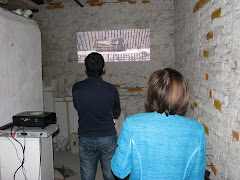














![exi[s]t>15 bulart](https://blogger.googleusercontent.com/img/b/R29vZ2xl/AVvXsEj67mt21mvAFC3VF_3QGzADB-5ZJJLBOlefD6Y8pi5z2e6HTMZztaHCi08vSOJ39mER-PcUmXUyHBnc-dMAq1t6MQe8reeNnIkyGKauFhd88y3NSvcsTLRlB1EdJQrefHryZQxK6-eDTvM/s240/buffet.jpg)
![exi[s]t>15 bulart](https://blogger.googleusercontent.com/img/b/R29vZ2xl/AVvXsEjuEe0w0gLW9nkOXAPGHqtkn89laZeWaQoLwvH2WVTEinKMw5RfqWwzcAkl1Ep27R6j1aYRF4BkiMX_juuZnGDNHyoHRCd65KHsXMg_Z_a3-tLG4OpCSHOlsj5hsPsh_htA6DEegu-Ubic/s240/P8250003.jpg)
![exi[s]t >15 bulart](https://blogger.googleusercontent.com/img/b/R29vZ2xl/AVvXsEg_O-oTzQ29LIVymZGSJUzpJCQYiu6VEztB6VkUPJmKb2VN5bRGpbURyj3-2M3Zz5JGtRjgwY_tr4qC-K21d5pKAzHZn9gYhbw2Vk7CPxb5unRin_828kpxYnzJbDa2Gkx6U1PFw2q1NDI/s150/P8250077.jpg)





















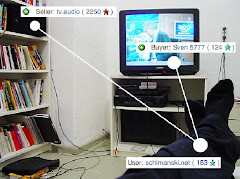














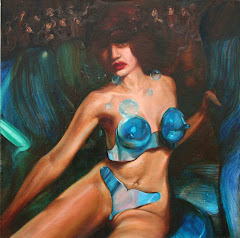
















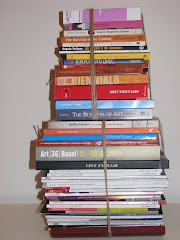




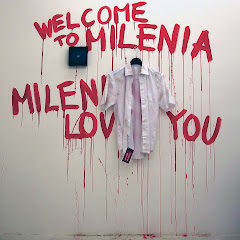

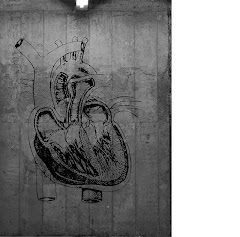







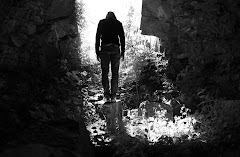



No comments:
Post a Comment